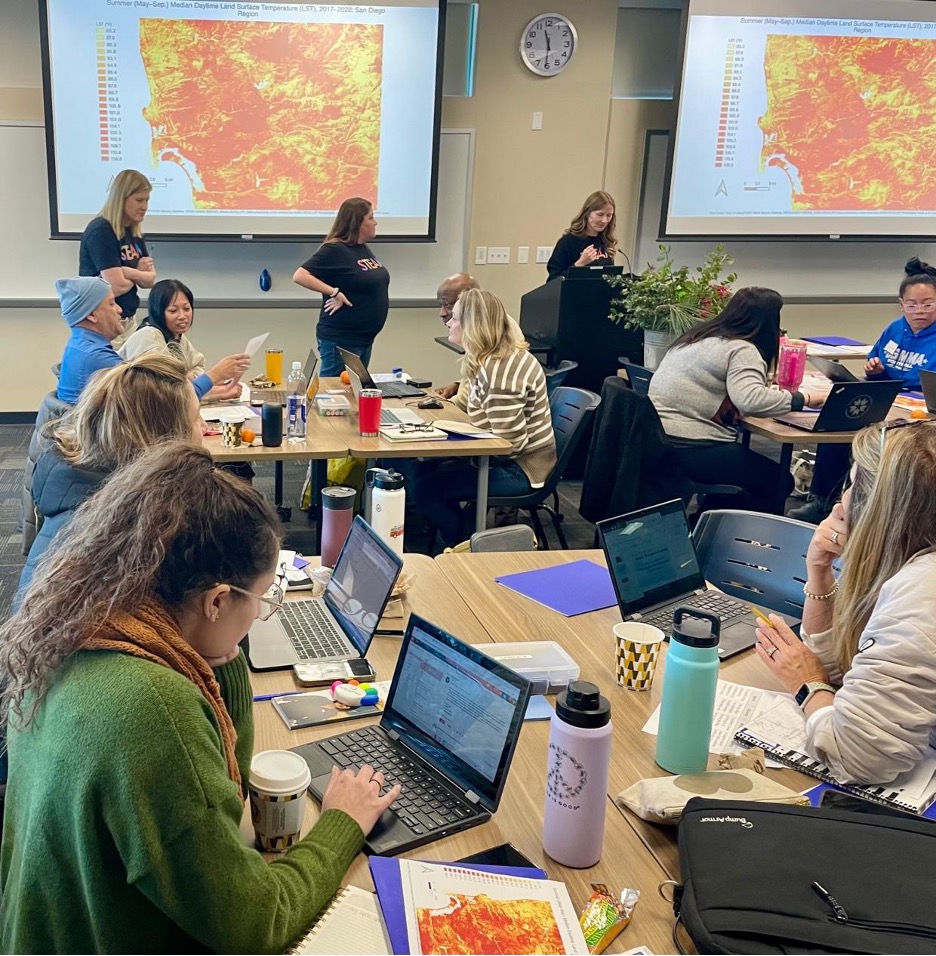Written by: Nan Renner, SoCal Heat Hub co-PI for K12 Education to Broaden Participation and Birch Aquarium at Scripps Senior Director of Strategic Partnerships.
Cooler Communities — curriculum created by San Diego Unified School District’s STEAM Team with support from the SoCal Heat Hub — compels fifth-grade students to think critically and creatively about their local environment. Teachers from 84 elementary schools are learning to use this curriculum for deployment this spring. Teachers act as “lead learners” who guide exploration of phenomena with driving questions, while students observe their community at multiple scales. Students analyze and compare satellite data visualizations (Google Earth landscape, land surface temperature, and normalized difference vegetation index) to make sense of observable patterns (e.g., urban hot spots have less vegetation). They make models to explain causal relationships in Earth systems, e.g., highlighting connections between plants (biosphere), water (hydrosphere), air temperature (atmosphere), and differences in land surface (geosphere). Students collect temperature data at their schools. They document where they like to spend time and why. Drawing on what they’ve learned and informed by interviews with community members, students create a future map to share their vision for a community that is cooler in every sense of the word. SoCal Heat Hub community partners, such as Tree San Diego, have offered to help implement students’ ideas in collaboration with the school district.
Kudos to the SDUSD STEAM Team led by Zoë Randall for combining ambitious science teaching with locally relevant phenomena and student agency. They have thoughtfully integrated the Next Generation Science Standards with socio-emotional learning that is experience-based and collaborative. In Zoë’s words, “I’m so excited for the potential positive impact the Cooler Communities project can have on our San Diego region. As students experience the phenomena of different land surface temperatures in San Diego, their inquiry could lead them to real change in their schools and communities. It’s an important project because it shows our fifth-grade students that they have the agency to be the designers of a future cooler community today.”
Stay tuned for updates on this curriculum roll-out!
Header image caption: San Diego Unified teachers learn together about SoCal Heat Hub science and locally relevant phenomena using the Cooler Communities curriculum on January 9, 2024. Photo by Zoë Randall.

